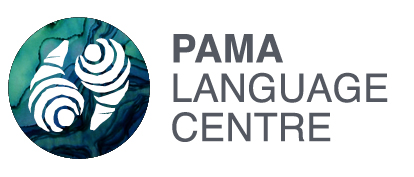Sunda and Sahul
Bubu gadil Sunda gurra bubu gadil Sahul
Mapbi nhaawaa wanhtharra thalun nyuunday-nyuunday gadiiga, thadiiga past 140,000 years.
Kurt Lambeckngun ANUngan data wuthi nguumbaarrngu.
This animated map shows how the sea levels have fallen and risen over the past 140,000 years.
Data for changing sea levels graph from Kurt Lambeck ANU.
Bubu ngutha-ngutha
The land a long time ago
Learning Points
Guugu Yimithirr
Mundal scientistsngayngun gurralal bama thagaalngan miiraathi Australiawi 65,000 years ago ganaaygu.
Gurra wanhtha-wanhthaalga thana gaday dagungay warrgaaygu warra-buthun walu yindu wunay.
Thalun balay wunay, warra-buthun ngathal. Nhagala nhayun gurra bubu, galmba gathii gaarbaarr burriir wunay murru.
Waguurrga Jibaalnggurr Asiawi ngundu guwaar-guwaar Australiabi wunay. gurra warrga bubu.
Scientistsngun thaawilil nhayun bubu mugul “Sunda”. Gurra galmba Australia, Tasmania, gurra Papua New Guinea wunay nubuun yabarraban nhamu-nhamu.
English
Most scientists think that people first arrived in Australia about 65,000 years ago.
When they came everything was very different to the way it is today.
The sea level was much lower. This means there was more land and the distances between islands were shorter.
Mainland Southeast Asia to the north-west of Australia was a much bigger land.
Scientists have called that old land Sunda. Also, Australia, Tasmania and Papua New Guinea were one big country back then. Scientists have called this old country Sahul.
Yiyi nguumbaarrbi nhundu nhaawaa thudaanngay wanhthaalbi bama muguul-muguul Australiawi gadiiga. Nganhthaan binaalmul thana gaday thudaan diiniwi, nguba thudaan barga-bargawi – Scientistngay wuguurr-ngarraaliyagu. Magu mundal scientistngay gurralal bama muguul-muguul Sulawesiwi thirrgaligu thadiiga.
Nganhthaan gaban Shimona Kealywi, Julian Louysbi, Sue O’Connorwi nhaathi binaal-mathinu. Ngahnthaan nguumbaarr https://www.researchgate.net/figure/Map-of-Australasia-showing-extent-of-the-Sunda-and-Sahul-continental-landmasses-with_fig1_227000047 nhaathi yiyi nguumbarr ngaambuurrgu balganu.
This map shows the routes that might have been taken by the first people who came to Australia. Scientists still disagree about which of these routes is most likely. The red route going through Sulawesi is favoured by most scientists.
This information is from 2018 article by Shimona Kealy, Julien Louys, Sue O’Connor. This animated map is based on https://www.researchgate.net/figure/Map-of-Australasia-showing-extent-of-the-Sunda-and-Sahul-continental-landmasses-with_fig1_227000047
The first People (GY)
The first people (English)
Learning Points
Guugu Yimithirr
Thana bama muguul-muguul wali thaday guwaanun Sundangan nagaar Sahulga, gala-ganbanbarrin thalun burriirngan warrga-ngamu. Scientistsngun gurralal strait yabarraban nhamu-nhamu wunay walu 70 km. Thana ngaabaay-bungal gulnguuygu, gurra thanaan gulnguuy warra dabaar wunay wadu balganu.
Mundal nhin-gay nhagala burriirbi, gurra mudal wali thaday galbaaygu Sahulngu. Nhamun-gu nganaa nhila Papua New Guinea, Australiawi thamaalbi thadanda galbaaygu. Nhamu-nhamu nhanharrin bubungay gaari wunay yalgaarr thaluun.
Scientistsngun nhila gurralal nhagala nguba ngamu buthun bamangay wali thaday yarrbanun gana-ganaa-ngun.
English
Generation after generation those ancestors travelled from north-west Sunda to Sahul crossing the ocean from island to island many times. Scientists think the largest strait at the time was around 70km. They were clever sailors and must have had good vessels to make the journey.
Some stayed on those islands, while others travelled all the way to Sahul. From what is now Papua New Guinea to Australia people could walk all the way. At that time those countries were not separated by the sea.
Scientists now think that probably thousands of people travelled this way over many years.
